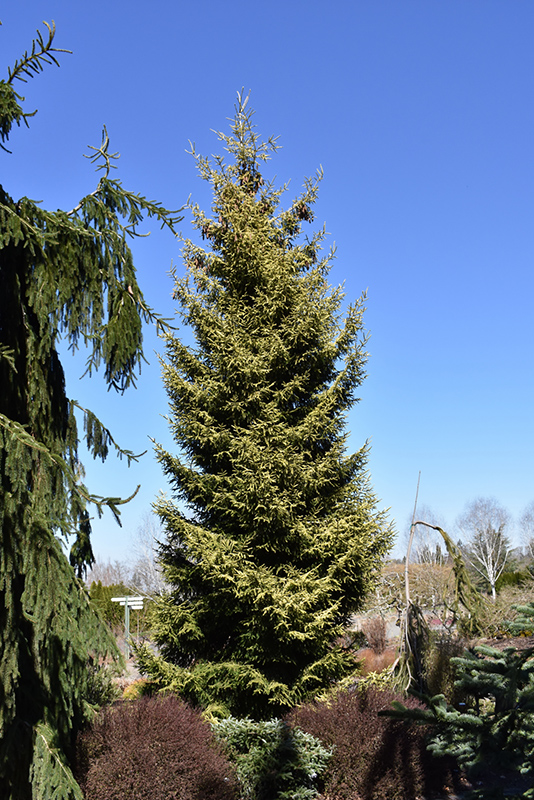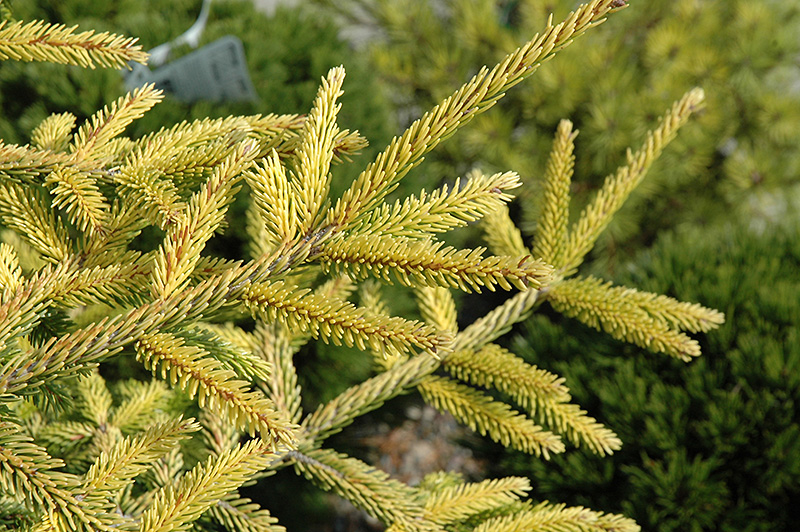>> Home
Skylands Golden Spruce
Picea orientalis 'Skylands'
Height: 35 feet
Spread: 20 feet
Sunlight:
![]()
Hardiness Zone: 5
Description:
A memorable tree for home landscape use, with bright golden new growth in spring which eventually fades to lime green and a tall, pyramidal habit; ideal as a tall color accent in the greater landscape skyline
Ornamental Features
Skylands Golden Spruce is primarily valued in the landscape for its distinctively pyramidal habit of growth. It has attractive yellow evergreen foliage which emerges gold in spring. The needles are highly ornamental and turn chartreuse in the fall, which persists throughout the winter. The rough brown bark adds an interesting dimension to the landscape.
Landscape Attributes
Skylands Golden Spruce is a dense evergreen tree with a strong central leader and a distinctive and refined pyramidal form. Its relatively fine texture sets it apart from other landscape plants with less refined foliage.
This is a relatively low maintenance tree. When pruning is necessary, it is recommended to only trim back the new growth of the current season, other than to remove any dieback. It has no significant negative characteristics.
Skylands Golden Spruce is recommended for the following landscape applications;
- Accent
- Vertical Accent
Planting & Growing
Skylands Golden Spruce will grow to be about 35 feet tall at maturity, with a spread of 20 feet. It has a low canopy, and should not be planted underneath power lines. It grows at a slow rate, and under ideal conditions can be expected to live for 70 years or more.
This tree should only be grown in full sunlight. It is very adaptable to both dry and moist growing conditions, but will not tolerate any standing water. It may require supplemental watering during periods of drought or extended heat. It is not particular as to soil type or pH. It is somewhat tolerant of urban pollution, and will benefit from being planted in a relatively sheltered location. Consider applying a thick mulch around the root zone in winter to protect it in exposed locations or colder microclimates. This is a selected variety of a species not originally from North America.

